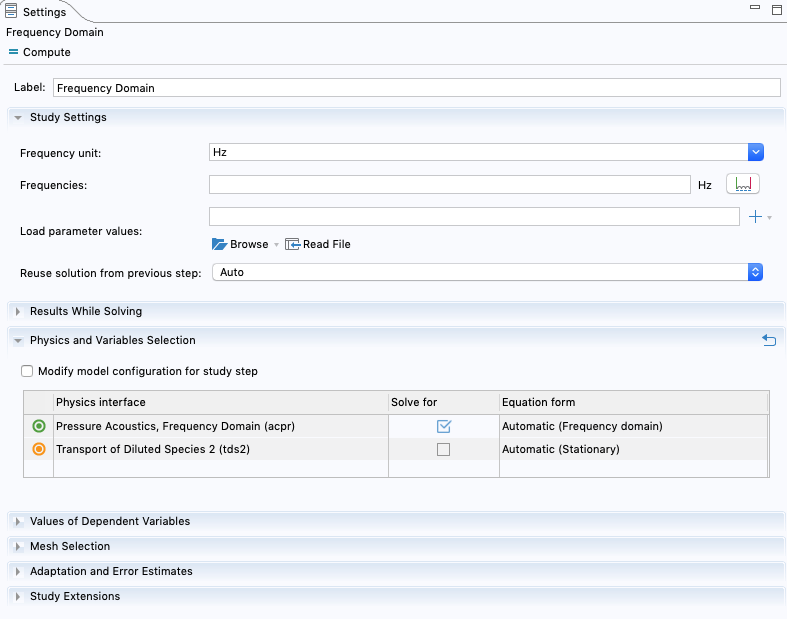Discussion Closed This discussion was created more than 6 months ago and has been closed. To start a new discussion with a link back to this one, click here.
Frequency-Stationary simulations in Acoustics
Posted Nov 15, 2022, 3:01 p.m. EST Acoustics & Vibrations, Studies & Solvers Version 6.0 4 Replies
Please login with a confirmed email address before reporting spam
Hi,
I have a model constituted by :
a pressure acoustics wave equation, which transforms into an Helmholtz equation in frequency domain (complex solution p)
for some reason, the wave velocity of the latter depends on another spatial field N, which is in turn a solution of a stationary PDE (say a Poisson equation to take a simple example), whose coefficients depends on the acoustic field p.
The two equations are therefore bi-directionally coupled and must be solved together. The problem is that the pressure acoustics problem requires a frequency-domain solver, whereas the stationnary PDE requires a staionnary solver, and I cannot get how to program a single study containing both.
One turnaround is to use "Helmholtz equation" instead of "Pressure acoustics", because Helmholtz is solved by a stationnary solver also. This is what I do for now, and this works perfectly, but for further complexification (coupling with structure vibration), I would prefer to use "Pressure Acoustics".
As far as I understand, there exists such hybrid solvers named "Frequency-Stationary" in other contexts (here with RF module for example), but not in a general context. Maybe I could build that by myself ? How ?
Any hint would be welcome.
Thank's a lot.

